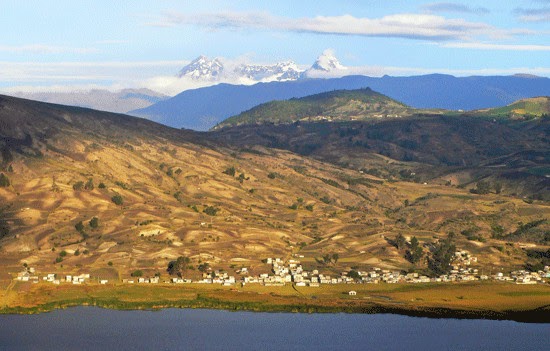
Although being able to predict the date on which the next big earthquake will occur is still some way off becoming a reality, it is now possible to identify the areas where they will occur. IRD researchers and their French, Ecuadorian and Peruvian partners have just measured the current deformation in the northern part of the Andes for the first time using GPS, where the tectonics of the Pacific and South American plates govern the high seismic activity in the region. The scientists then identified the areas where the fault, located at the interface of these two plates, is capable of generating large earthquakes or not.
This work, which was published in Nature Geoscience, also shed light on the formation of large tectonic structures such as the Bolivian highlands and the Gulf of Guayaquil in Ecuador, with the discovery of a continental microplate in Peru and southern Ecuador.
First measurement of the deformation in the northern Andes
The Andes have had three of the largest earthquakes ever recorded: on the border between Colombia and Ecuador in 1906, as well as in Chile, in 1960 and again in 2010. When will one of these major earthquakes happen there again? It is impossible to say… But scientists can now identify the areas where it will occur. Researchers from the Géoazur, ISTerre and ISTEP laboratories and their partners from geophysical and geographical institutes in Ecuador and Peru, have just measured the deformation in the northern Andes caused by the subduction of the Pacific Oceanic plate under the South American continental plate. Using a vast GPS network which has been deployed since 2008 and observational data collected since the 1990s, they have quantified the movements of 100 measurement points from central Peru to southern Colombia, with an accuracy of about one millimetre per year.
Clearly determined seismic areas
The researchers were able to locate the areas at risk. Only two fault segments can produce mega-earthquakes (greater than 8.5 on the Richter scale), potentially accompanied by tsunamis: the first is located in central Peru and the second is further north, extending from northern Ecuador to southern Colombia. In between these two active segments, the research team identified a third subduction segment. Somewhat surprisingly, this is characterised by sliding that is mainly “aseismic.” So in this area spanning more than 1,000 km from the north of Peru to the south of Ecuador, or 20% of the length of the Andean subduction, the accumulated energy seems insufficient to produce a mega-earthquake. Across the region, earthquakes remain more superficial and more modest in magnitude, as shown in recent history.
Andean structures explained
These studies have also enabled the researchers to discover a large continental block, wedged between the Pacific and South American plates. This piece of continent was called the “sliver Inca” by the authors of the study and is more than 1,500 km long and 300 to 400 km wide. It is separated from the continental plate and moves 5 to 6 mm per year towards the south-east in relation to it. This finding suggests that the current deformation of the Andes from Venezuela to southern Chile, and the seismic activity in the region are dominated by the movements of several microplates of that type.
The discovery of the “sliver Inca” also explains the location of major tectonic structures. For example, the Bolivian highlands, the second highest plateau in the world, was created by the “sliver Inca” and the central Andes microplate coming together. In contrast, the opening of the Gulf of Guayaquil in Ecuador is a result of the divergence of the Inca block and the northern Andes microplate.
These studies allow a better understanding of recent developments in the Andes and their continental margins. They therefore make better estimates of seismic hazards in the region possible.
Note : The above story is based on materials provided by Institut de Recherche pour le Développement (IRD).










